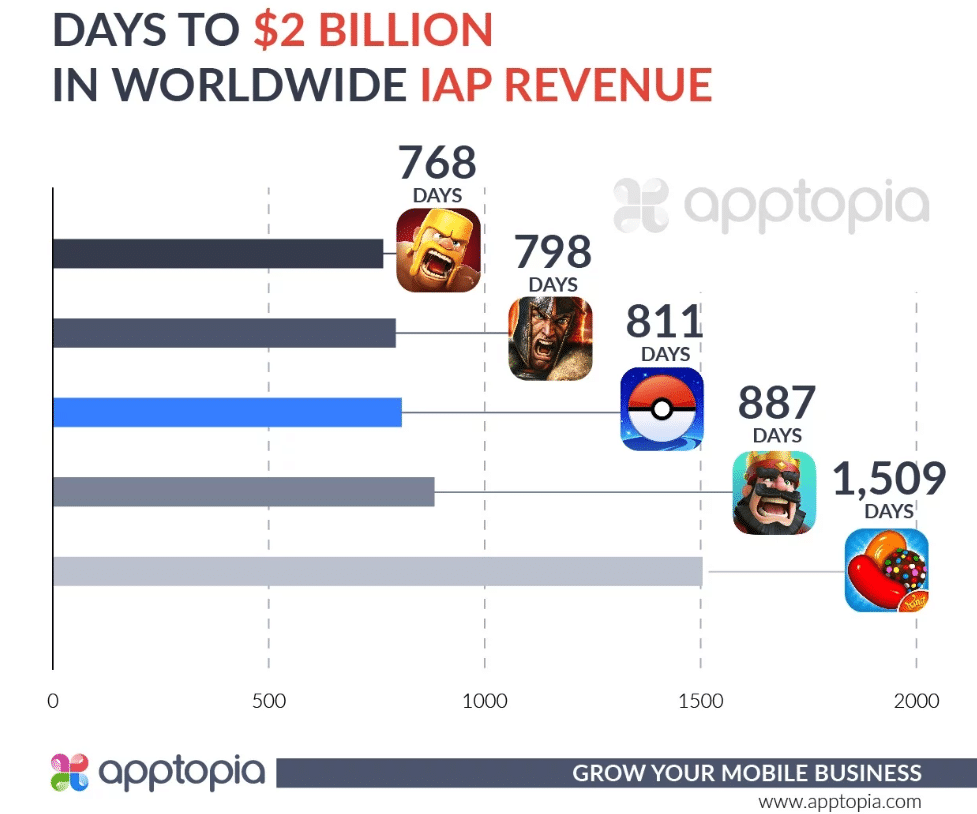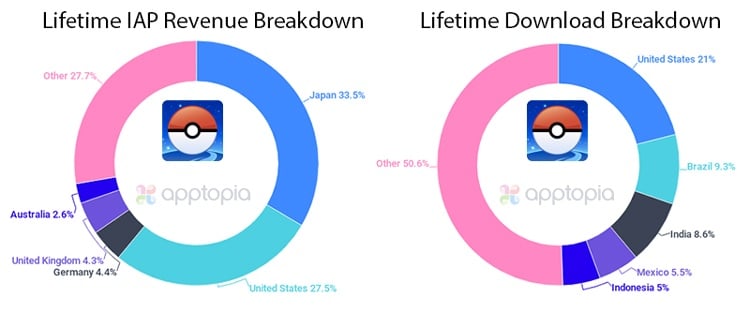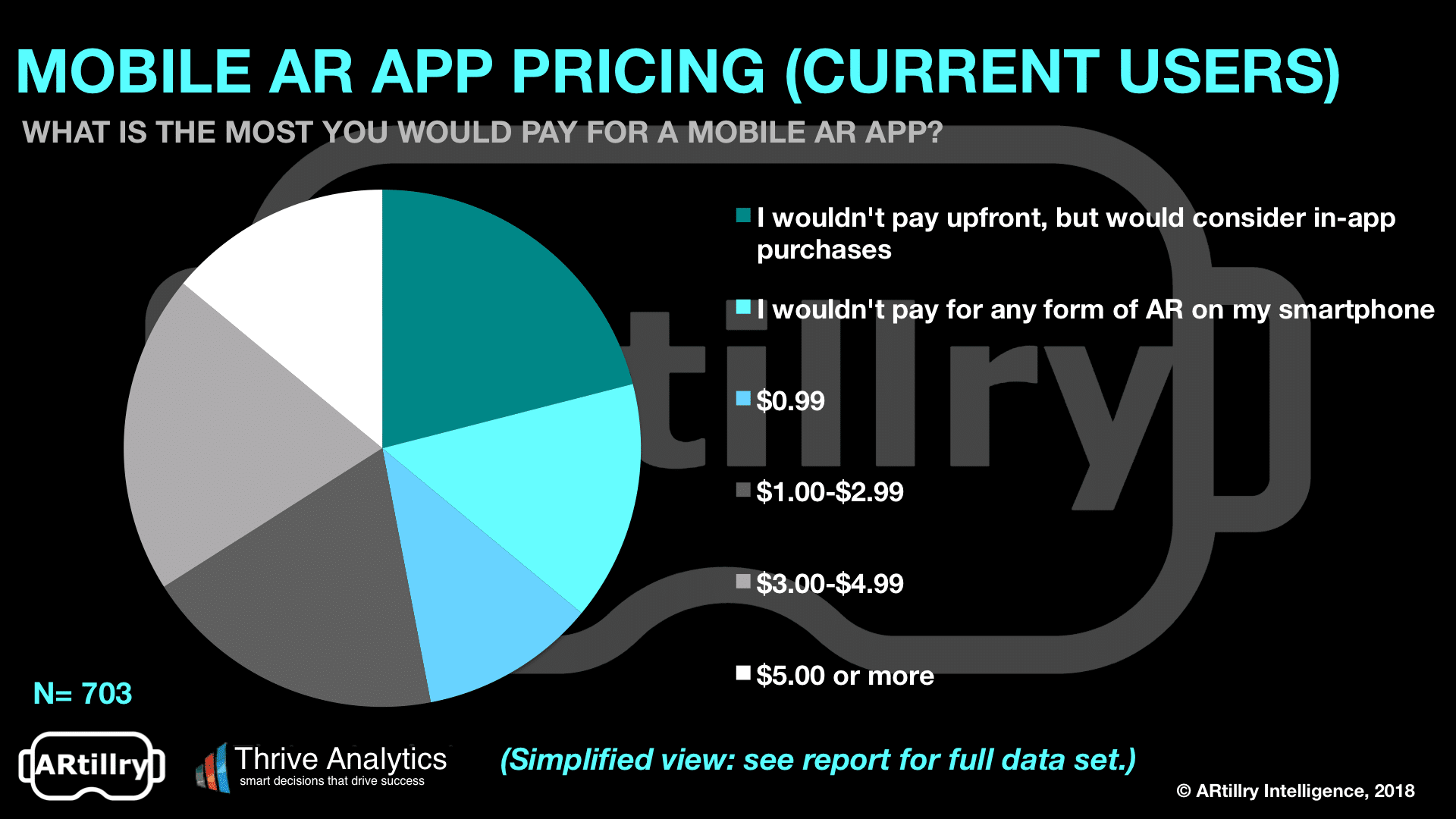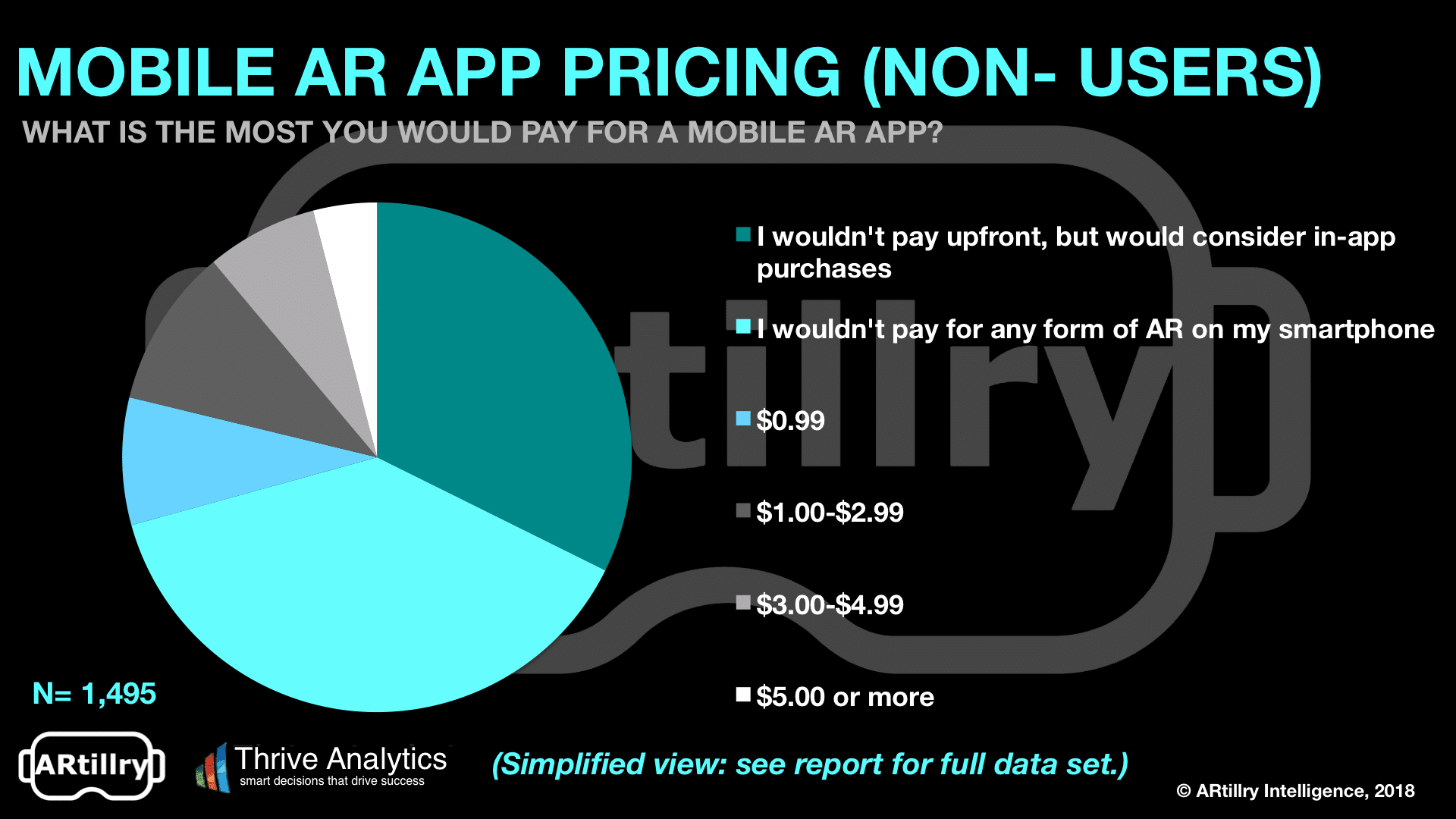
Data Point of the Week is ARtillry’s weekly dive into data from around the XR universe. Spanning usage and market-sizing data, it’s meant to draw insights for XR players or would-be entrants. To see an indexed archive of data briefs and slide bank, subscribe to ARtillry Pro.
Though it’s down from its late-2016 peak, Pokemon Go continues to get lots of active use. It’s not as large in the collective consciousness through news headlines, but a sizable core base of users continues to engage, driven partly by updates and new generation releases.
Its new feature that will track and gamify players’ steps in the background should also add new dimensions of play. Meanwhile, it appears that after a 2017 lull, lots of players have already re-engaged with the game. Niantic reports players walked 53 percent more in 2018 than in 2017.
Quantifying this activity in financial terms, Niantic also reports that the game has made $2 billion in revenue to date — 811 days. We expect engagement and revenues to grow as Niantic integrates new AR cloud functionality that it picked up through acquisitions of Escher Reality and Matrix Mill.


All of this functionality is baked into its Real World Platform, which is an important milestone in the AR ecosystem. It’s a toolset that will enable app developers to build experiences on top of the infrastructure that Niantic spent years building up the hard way. We call it AR as a service.
But as it builds that platform as a revenue center, the functionality can flow back into Niantic’s own titles like Pokemon Go and the forthcoming Harry Potter: Wizards Unite. The jury is still out on if the latter can see the same breakout success as the former, but the IP is strong (half the battle).
Besides providing an important service to jumpstart the mobile AR ecosystem, Niantic has done everyone a favor by validating the business model. Back to the $2 billion figure, it’s important to note that it’s all in-app purchases. This is invaluable market research for any emerging AR apps.


As we’ve calculated in our recent 2018 Fall forecast, consumer AR revenues will grow to $16.5 billion by 2022, which is mostly software until smart glasses arrive. And within that software revenue category, in-app purchases dominate. This is partly informed by Pokemon Go’s model.
Other support for IAP as a prevailing revenue model comes from our consumer AR survey data (above). There too, in-app purchases are validated as a payment method that consumers are comfortable with. It stands to reason that early/unproven technology has high price sensitivity.
This will be a moving target, but we’re already seeing early success factors in AR games. Though Pokemon Go’s gameplay is light on AR, that will change as Niantic continues to acquire, develop and integrate spatial computing into the Real World Platform. We’ll be watching closely.
For deeper XR data and intelligence, join ARtillry PRO and subscribe to the free AR Insider Weekly newsletter.
Disclosure: AR Insider has no financial stake in the companies mentioned in this post, nor received payment for its production. Disclosure and ethics policy can be seen here.
Header image credit: Niantic
